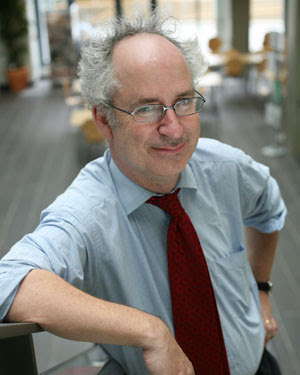Frank N.M. Twisk, Patient and literature researcherCBT/GET is
ineffective and potentially
harmful.
ME/CFS patients seem to die considerably younger.
13 February 2010
As has been established by the Bagnall et al. (1) and the Price et al. (2), the solution proposed by Santhouse (3) cognitive behavioural therapy (CBT)/graded exercise therapy (GET) reduced "fatigue severity" in 40% of chronic fatigued people, in contrast with 26% in usual care.
Taking into consideration the placebo effect, the fact that a reduction in "fatigue" is not reflected by objective improvement (4, 5), the fact that the evidence base for CBT and GET is almost non-existent, etc. one must
conclude that CBT and GET is not effective.
Moreover, as established by large patient surveys, e.g. (6, 7), and by clinical practice (5),
CBT/GET has a negative effect on the symptomology of many ME/CFS patients (pain, muscle weakness, neurocognitive impairment etc.)
This can be explained by the fact that
exertion, and thus GET, intensifies the pre-existing pathophysiology: inflammation, immune dysfunction, immunosuppression, (persistent) infections, oxidative and nitrosative stress and their sequels, e.g. mitochondrial damage/dysfunction and a disturbed circulation (8, 9).
All in all,
CBT/GET is a non-evidenced based therapy and even potentially harmful for many ME/CFS patients (10).
Santhouse also asserts
incorrectly that 'the greatest risk to life is likely to be suicide' and 'this is often linked to depression that can be effectively treated'.
A study into the causes of death by a Jason (11) established that ±20% of the patients had died from cancer, ±20% had died as the consequence of heart failure, and ±20% as a result of suicide.
The mean age of those who died from cancer and suicide was 47.8 and 39.3 years, respectively, which is ±24 years younger than those who died from cancer and suicide in the general population.
The pathological abnormalities established in ME/CFS repeatedly plausibly explain an increased risk for cancer (12)and heart failure (13).
Certainly it is warranted to treat depression in ME/CFS.
However, successfully treating depression, e.g. by antidepressants, has no effect on characteristic physical and cognitive ME/CVS symptoms (14, 15, 16).
In conclusion, the comments made by Santhouse do not seem to be very appropriate.
Ironically, the CBT/GET mantra by Santhouse and colleagues and denial of serious biological aberrations is exactly the reason why many patients feel that 'the medical profession has given up to them'.
It is about time the medical profession takes this devastating illness seriously by exploring the biological abnormalities in depth and developing effective therapies aimed at these aberrations.
So the death of Lynn Gilderdale and many others will not be in vain.
1.. Bagnall A, Hempel S, Chambers D, Orton V, Forbes C. The Treatment and Management of Chronic Fatigue Syndrome/Myalgic Encephalomyelitis in Adults and Children. Centre for Reviews and Dissemination (CRD), University of York. 2007; CRD Report 35:161.
2. Price JR, Mitchell E, Tidy E, Hunot V. Cognitive behaviour therapy for chronic fatigue syndrome in adults. Cochrane Database Syst Rev. 2008 Jul 16;(3):CD001027.
3. Santhouse AM, Hotopf M, David AS. Chronic fatigue syndrome. BMJ. 11 February 2010. doi:10.1136/bmj.c738.
4. Wiborg JF, Knoop H, Stulemeijer M, Prins JB, Bleijenberg G. How does cognitive behaviour therapy reduce fatigue in patients with chronic fatigue syndrome? The role of physical activity. Psychol Med. 2010 Jan 5:1 -7.
5. Council of approval with regards to rehabilitation contracts with CFS reference [Akkoordraad in het kader van de revalidatieovereenkomsten inzake ten laste neming door Referentiecentra van patiënten lijdend aan het Chronisch vermoeidheidssyndroom] [Dutch]. Evaluation Report (2002- 2004) with respect to Rehabilitation Contracts between the RIZIV and the CFS Reference Centers [Evaluation Report 2002-2004 with respect to rehabilitation contracts between the RIZIV and the CFS Reference Centers] [Dutch). 2006, July.
6. Action for M.E./AfME. Scotland M.E./CFS Scoping Exercise Report. 2007.
7. Bjørkum T, Wang CE, Waterloo K. [Patients' experience with treatment of chronic fatigue syndrome] [Article in Norwegian]. Tidsskr Nor Laegeforen. 2009 Jun 11;129(12):1214-6.
8. Kerr JR, Petty R, Burke B, Gough J, Fear D, Sinclair LI, Mattey DL, Richards SC, Montgomery J, Baldwin DA, et al. Gene expression subtypes in patients with chronic fatigue syndrome/myalgic encephalomyelitis. J Infect Dis. 2008 Apr 15;197(8):1171-1184.
9. Gow JW, Hagan S, Herzyk P, Cannon C, Behan PO, Chaudhuri A. A gene signature for post-infectious chronic fatigue syndrome. BMC Medical Genomics 2009, 2:38. doi:10.1186/1755-8794-2-38.
10. Twisk FNM, Maes M. A review on cognitive behavorial therapy (CBT) and graded exercise therapy (GET) in myalgic encephalomyelitis (ME)/chronic fatigue syndrome (CFS): CBT/GET is not only ineffective and not evidence-based, but also potentially harmful for many patients with ME/CFS. Neuro Endocrinol Lett. 2009 Aug 26;30(3):284-299.
11. Jason LA, Corradi K, Gress S, Williams S, Torres-Harding S (2006). Causes of death among patients with chronic fatigue syndrome. Health care for women international. 2006; 27 (7): 615–26. doi:10.1080/07399330600803766.
12. Meeus M, Mistiaen W, Lambrecht L, Nijs J. Immunological similarities between cancer and chronic fatigue syndrome: the common link to fatigue? Anticancer Res. 2009 Nov;29(11):4717-26.
13. Maes M, Twisk FNM. Why myalgic encephalomyelitis/chronic fatigue syndrome (ME/CFS) may kill you: disorders in the inflammatory and oxidative and nitrosative stress (IO&NS) pathways may explain cardiovascular disorders in ME/CFS. Neuro Endocrinol Lett. 2009;30(6):677- 93.
14. Vercoulen JH, Swanink CM, Zitman FG, Vreden SG, Hoofs MP, Fennis JF, Galama JM, van der Meer JW, Bleijenberg G. Randomised, double-blind, placebo-controlled study of fluoxetine in chronic fatigue syndrome. Lancet. 1996 Mar 30;347(9005):858-61.
15. White PD, Cleary KJ. An open study of the efficacy and adverse effects of moclobemide in patients with the chronic fatigue syndrome. Int Clin Psychopharmacol. 1997 Jan;12(1):47-52.
16. Wearden AJ, Morriss RK, Mullis R, Strickland PL, Pearson DJ, Appleby L, Campbell IT, Morris JA. Randomised, double-blind, placebo- controlled treatment trial of fluoxetine and graded exercise for chronic fatigue syndrome. Br J Psychiatry. 1998 Jun;172:485-90.
Competing interests: None declared




